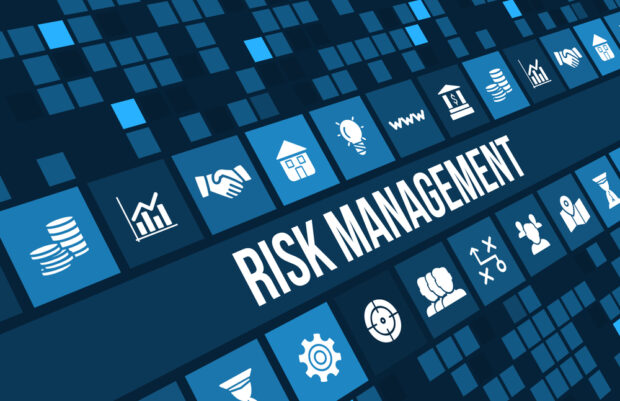Two reports released recently highlight the risks to watch for businesses in the coming year.
The Hartford Risk Monitor, spotlighting top risks for mid to large businesses through a survey of agents and brokers, found the top concerns centered on artificial intelligence (AI), cyber, weather, gaps in insurance coverage and geopolitics.
Drilling down further, supply chain disruptions and increasing operational costs related to geopolitics redistribution, increasing severity and frequency of cyber-attacks, awareness of emerging risks, new products and exposure related to AI, keeping up with new technology, gaps in insurance related to extreme weather and growing awareness of multinational exposure were noted as top risks to monitor by The Hartford.
Aon’s 2023 Global Risk Management Survey of 3000 respondents in 61 countries, found similar concerns; however, AI and climate did not rank as high.
With respect to supply chain risk concerns, according to Aon’s survey, less than 40 percent of organizations have conducted supplier resiliency assessments and less than 20 percent have diversified their supplier base to mitigate supply chain or distribution failure risk.
One surprising finding in Aon’s survey, attracting and retaining talent made the top ten list of greatest concerns.
Economic slowdown, regulatory conditions, cyber risk and business interruption were also top risk concerns, the Aon survey found.
“The world is more volatile, reflecting a series of profound transitions across trade, technology, weather and workforce issues that have awoken business leaders to the increasingly interconnected nature of risk and people challenges,” said Aon CEO Greg Case.
The human capital issue, according to Aon, intensifies all risks. For example, both The Hartford and Aon found cyberattacks and supply chain issues to be risks to watch, with both risks exacerbated by lack of training and lack of employees to fill the positions needed to address these risks.
Aon found that human capital concerns were “fueled by rising health care costs, the competition for talent, workforce shortages and a lack of retirement preparedness.”
In addition, despite the rise in risk concern, just 11 percent of survey respondents indicated they have quantified their people risks, Aon found.
“We are at a pivotal moment in time, when business leaders are recognizing the true cost of human capital challenges and the reality that people risk intensifies all other top business risks,” said Lambros Lambrou, CEO of Human Capital at Aon. “Shortfalls in talent, workforce or critical specialized skills can hamper innovation and competitiveness and increase exposure to cyberattacks, regulatory breaches, supply chain issues, business interruption and reputational damage.”
Despite the differences in the survey findings on where climate change and weather concerns rank, both companies emphasized the importance of evaluating risk related to volatile weather, including the impact of storms and natural disasters to their business operations both in the U.S. and abroad.
Staying abreast of geopolitical crisis and clashes is also critical for multinational corporations and businesses that rely on a global supply network.
“According to The Hartford’s research, nearly 80 percent of midsize businesses in the United States have some level of multinational exposure, yet nearly 40 percent percent of mid- to large-size businesses have never spoken with their agent or broker about their multinational risks,” Tracey Ant, head of Middle & Large Commercial Business Units noted. “In addition, 68 percent of business owners surveyed are worried that they do not have adequate coverage for their international operations. These concerns may be well founded. Domestic policies may not provide protection for multinational exposures, leaving many mid- to large-size businesses in the United States uninsured, underinsured or improperly insured.”
Coverage gaps may exist due to changes related to economic inflation, she added.
Both companies suggested businesses should continue to practice good cyber hygiene.
“Threats to cybersecurity continue to be significant and complex,” The Hartford report noted.
The top ten global risks according to the 2023 Global Risk Management Survey:
- Cyber Attacks/Data Breach
- Business Interruption
- Economic Slowdown/Slow Recovery
- Failure to Attract or Retain Top Talent
- Regulatory/Legislative Changes
- Supply Chain or Distribution Failure
- Commodity Price Risk/Scarcity of Materials
- Damage to Reputation/Brand
- Failure to Innovate/Meet Customer Needs
- Increasing Competition





















 What to Expect in 2026: U.S. P/C Results More Like 2024
What to Expect in 2026: U.S. P/C Results More Like 2024  California Workers Comp Combined Ratio for 2024 Highest in 20-Plus Years
California Workers Comp Combined Ratio for 2024 Highest in 20-Plus Years  First Atlantic Hurricane Forecast for 2026 Suggests Season Close to 30-Year Norm
First Atlantic Hurricane Forecast for 2026 Suggests Season Close to 30-Year Norm  Insurance Costs, Climate Concerns Factor Heavily in U.S. Home Buying Decisions
Insurance Costs, Climate Concerns Factor Heavily in U.S. Home Buying Decisions 
